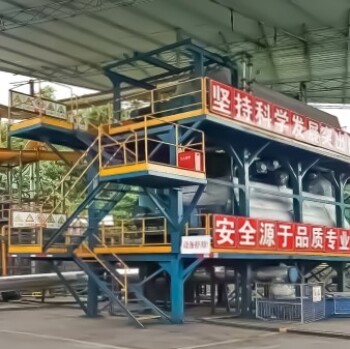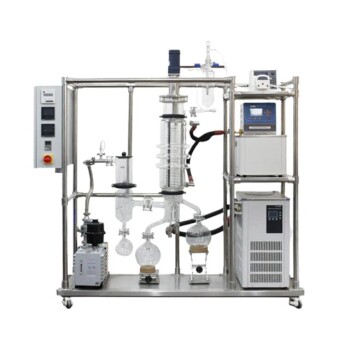Torrefaction is a process that involves the thermal treatment of biomass.
It typically occurs at temperatures ranging from 250 to 350°C.
This process happens in the absence of oxygen.
Torrefaction is a form of pyrolysis.
Pyrolysis is characterized by the thermal decomposition of organic materials.
This leads to changes in the physical and chemical properties of the biomass.
Torrefaction is considered an intermediate step between slow pyrolysis and carbonization.
It is often referred to as "roasting."
Summary of Torrefaction

Torrefaction is a thermal process that enhances the properties of biomass.
It does this by heating the biomass to temperatures between 250 and 350°C.
This happens in an oxygen-free environment.
The process results in a product that is more energy-dense.
It is also less hygroscopic and easier to grind compared to the original biomass.
The torrefied biomass, often called bio-coal, has improved fuel characteristics.
These characteristics make it suitable for combustion and co-firing in existing power plants.
Detailed Explanation
1. Process Conditions
Torrefaction operates at temperatures lower than those used in fast pyrolysis (400-700°C).
It operates at temperatures higher than those in slow pyrolysis (300-400°C).
The moderate temperatures used in torrefaction allow for the removal of moisture and volatile compounds from the biomass.
This happens without causing complete carbonization.
2. Changes in Biomass Properties
During torrefaction, biomass undergoes significant changes.
Decrease in Volume and Increase in Energy Density: The process reduces the volume of biomass by about 30%.
The heating value increases due to the removal of moisture and volatiles.
Increased Friability: The torrefied biomass becomes brittle.
This facilitates grinding into a fine powder, enhancing its usability in various applications.
Reduced Hygroscopicity: Torrefaction makes the biomass less attractive to water.
This improves its storage and handling properties.
3. Energy Efficiency and Yield
Torrefaction is highly energy-efficient.
Theoretical energy efficiencies range from 80 to 90%.
However, the process yields a lower amount of volatiles compared to other pyrolysis methods.
This might affect its autothermal operation (self-sustaining without external heat input).
4. Applications and Advantages
The primary advantage of torrefaction is the enhancement of biomass properties.
This makes it a more viable and efficient fuel source.
Torrefied biomass can be used in existing coal-fired power plants with minimal modifications.
This promotes the use of renewable energy sources.
Additionally, the process can be scaled for commercial applications.
This is seen in the torrefaction of coffee beans.
Correction and Review
The information provided is consistent with the principles of torrefaction.
The description accurately reflects the process conditions.
It also accurately reflects the changes in biomass properties.
The advantages of torrefaction are also accurately described.
There are no factual inaccuracies in the provided content.
Continue exploring, consult our experts
Discover the transformative power of torrefaction with KINTEK SOLUTION’s advanced thermal processing solutions!
From enhancing biomass properties to promoting sustainable energy, our innovative technology is shaping a greener future.
Unlock the potential of your raw materials, increase energy density, and simplify handling with KINTEK SOLUTION – where efficiency meets innovation.
Contact us today to revolutionize your torrefaction process and elevate your renewable energy initiatives!












